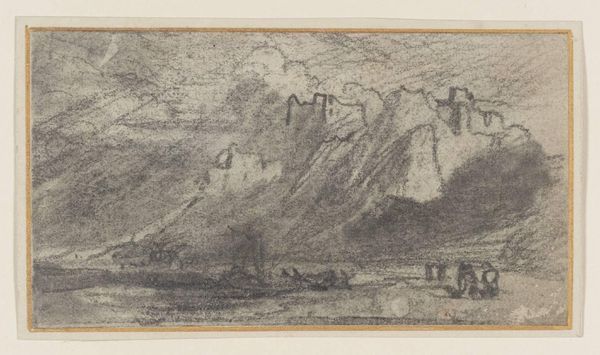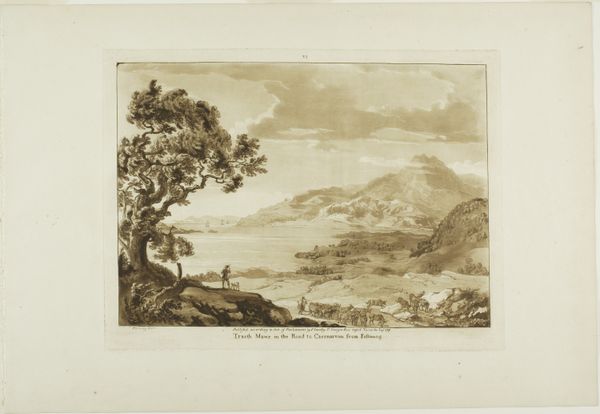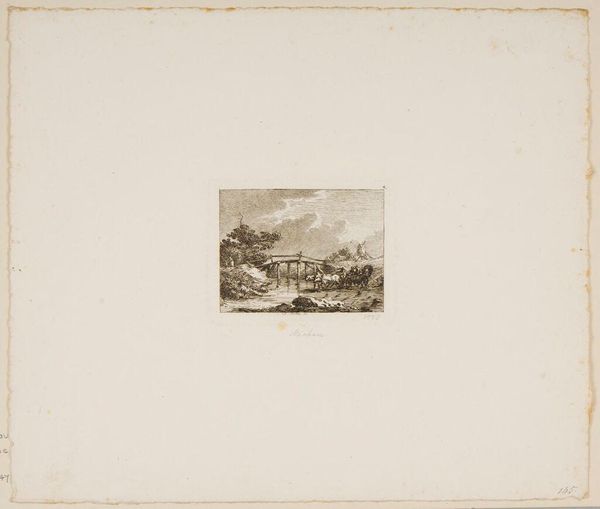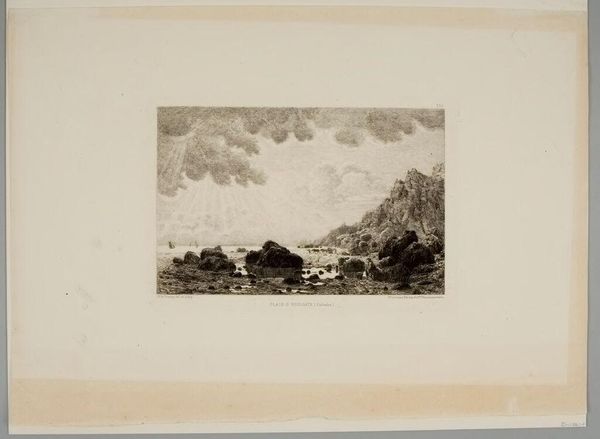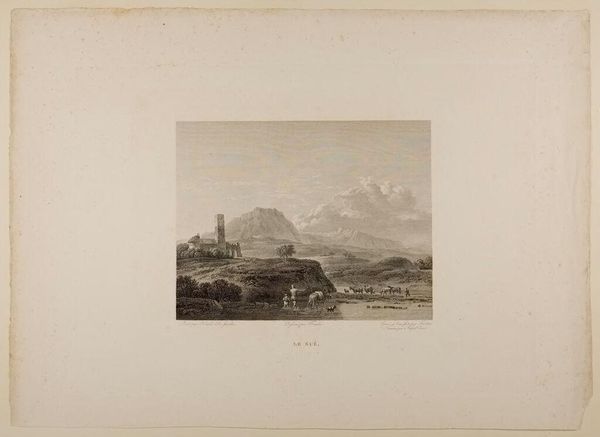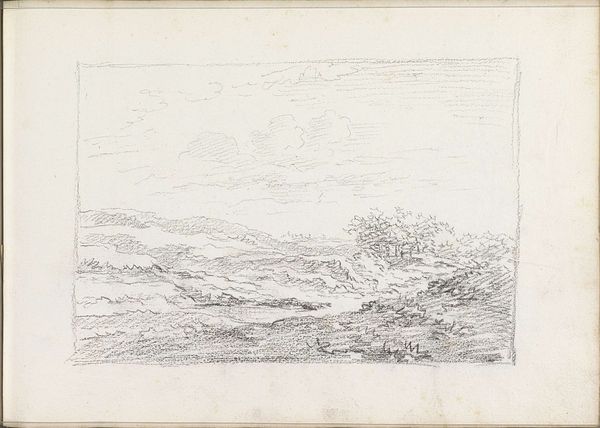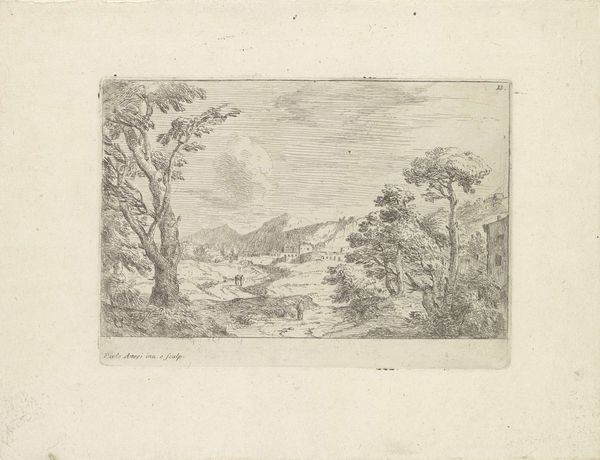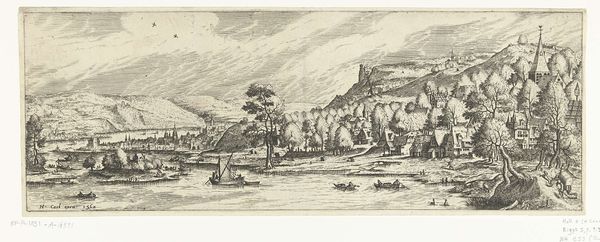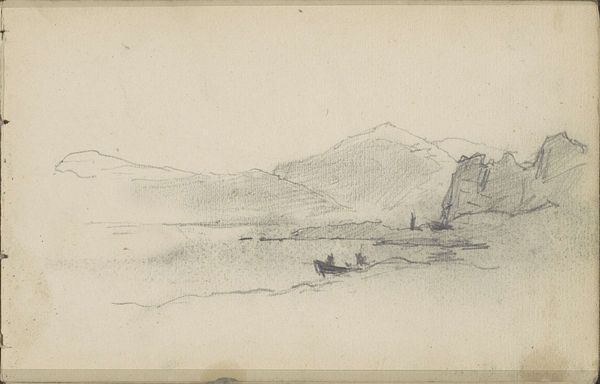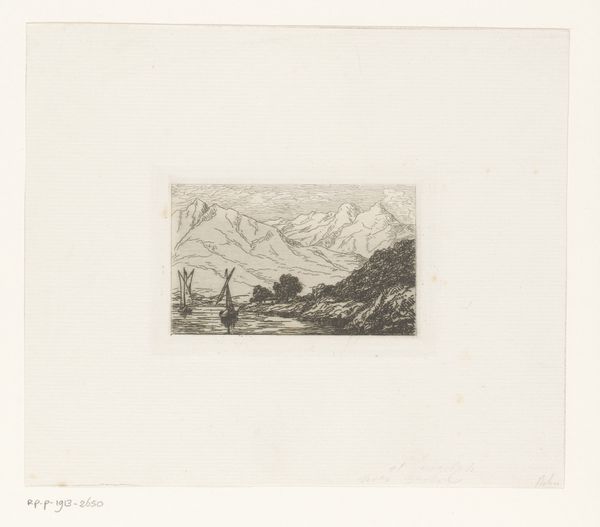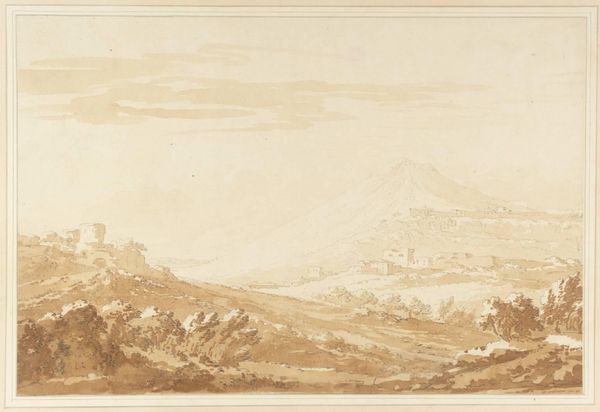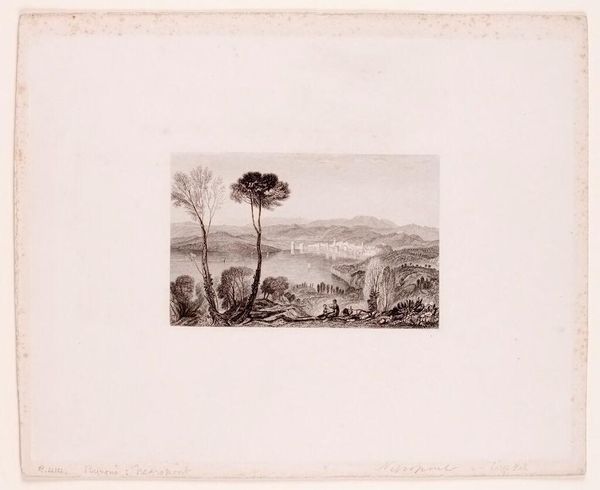
#
amateur sketch
#
light pencil work
#
pencil sketch
#
incomplete sketchy
#
etching
#
ink drawing experimentation
#
pen-ink sketch
#
sketchbook drawing
#
pencil work
#
sketchbook art
Dimensions: height 74 mm, width 111 mm
Copyright: Rijks Museum: Open Domain
Curator: This delicate etching, "River in a Mountainous Landscape," was created by Joseph Hartogensis around 1850. It resides here at the Rijksmuseum. What’s your initial read on this work? Editor: Immediately, I notice the starkness – the limited tonal range evokes a sense of quiet contemplation. The composition seems carefully balanced, almost mathematically divided into thirds. It is small scale but manages a sense of vastness. Curator: The medium, etching, speaks to accessibility and dissemination of imagery. The mid-19th century witnessed a boom in printmaking. This allowed for a wider audience to engage with landscape depictions previously confined to painting. Editor: True. The mark-making itself is quite fascinating. The lines are economical, yet effectively construct the mountainous terrain. Notice how he varies the line weight to suggest depth and texture, creating almost a structural support. Curator: And consider the socio-political backdrop. The burgeoning Romantic movement prized the sublime and the picturesque in nature. Etchings like this fueled the desire to experience these scenes firsthand or, failing that, to possess them visually. The print trade flourished amidst burgeoning tourism and a desire to collect “souvenirs” of distant places. Editor: It almost feels as if Hartogensis were attempting to capture something unattainable. Look at the detail given to the rocks in the foreground compared to the mountains in the back – almost an intentional degradation of fidelity to suggest insurmountable scale. The sketchy, unfinished quality gives it a real vitality. Curator: Indeed, the ‘unfinished’ aspect underscores the artistic process itself. It challenges the notion of the completed masterpiece and reveals a more intimate, exploratory side of landscape representation that was so common at that time. Perhaps it comments on art’s very relationship with capturing nature's vastness. Editor: This piece offers so much despite its small scale and spare quality. A masterclass in visual efficiency that reveals larger social and cultural perspectives around its creation. Curator: I agree; I was struck, especially after this conversation, about the work’s implicit message—art being about seeing the unseen through nature’s tangible forms.
Comments
No comments
Be the first to comment and join the conversation on the ultimate creative platform.
